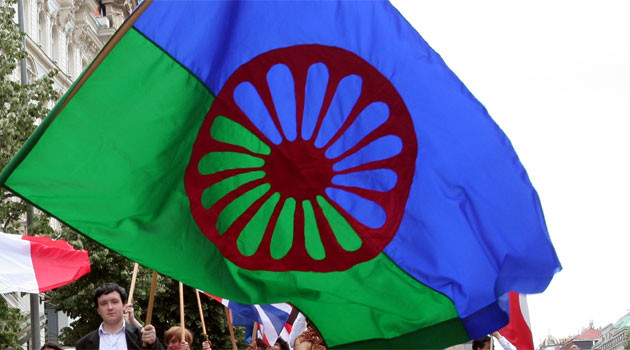
Each year since it was declared in 1990 by the International Romani Union, 8 April has marked International Roma Day, or Roma Nation Day. In recognition, politicians in a sparsely-populated House of Lords were last week clambering over each other to make clear their pro-Romani credentials. While Labour peer Baroness Thornton said she feared Romani were more likely to be excluded from democratic processes (no shit, Sherlock), Tory Baroness Warsi had the impudence to say the Coalition government were “working hard” to improve the lives of Roma at home and abroad, quite contrary to Eric Pickles’s ongoing crusade against travelling folk of all kinds. In this piece, resident Rom Craig McVegas marks International Roma Day by bringing to the fore 7 things you might not know about the Romani.
1. The Romani don’t primarily reside in Romania.
A common misconception is that Romani primarily hail from and reside in Romania. In actuality the Romani people trace their roots back to India, and the misunderstanding seems to come from the close resemblance the words bear. While a significant proportion of Romani do dwell in Romania, most can actually be found in the United States, Brazil and Spain.
2. UK-settled Romani are generally called ‘Romanichals’.
Romani are thought to have originally migrated to Britain in the 16th century. Since then, the vast majority have settled, even if certain cultural practices have been maintained. The modern settled Romanichal diaspora is in many ways diffuse, but Romani organizations such as the Gypsy Council provide representation and campaign on Romani issues. Prominent Romanichals include Charlie Chaplin, the actor Bob Hoskins, the academic Ian Hancock and… er, yours truly.
3. Up to two million Romani were killed in the Holocaust.
The Romani were among the first victims of the Third Reich’s policy of ‘euthanizing’ those regarded as ‘life unworthy of life’. Mobile killing squads are known to have been deployed across the Eastern Front to kill Romani on sight, and up to two million Romani are believed to have been killed in the Holocaust. The Romani Holocaust is often referred to in contemporary Gypsy academic work as the Porajmos, or ‘devouring’, though the term is uncommon among most Romani.
4. Antiziganism (Anti-Gypsyism) didn’t stop after WWII.
As recently as the 1980s Romani women were the victims of forced sterilization in Czechoslovakia, due to government efforts to stop Romani ‘breeding’. Far from anomalous, this policy has been popular throughout Europe in the 20th century; Norway only stopped the routine practice in 1977. In 2007, Romani children were still being segregated from other children in Czech and Slovakian classrooms, and in 2010 France dismantled over 50 Romani camps and set about a policy of forced repatriation.
5. Romani are the smallest minority in the UK…
…yet a 2008 poll found up to a third of the populace are openly prejudiced against them, even though Romani comprise fewer than 0.15% of the population. Despite common claims of ‘preferential treatment’ shown to to Romani and Travellers, around 90% of their planning applications for stopping places are refused, compared to the national average of around 20%. ‘Planning permissions’ have been the facade for a sustained attack on Romani and Traveller communities for a long time in the UK, as outlined in an earlier Novara Wire piece. Facts are still seldom considered before prejudices in the British establishment: in a 2002 debate on encampments, former-MP Andrew MacKay said of Romani, “They are scum, and I use the word advisedly. People who do what these people have done do not deserve the same human rights as my decent constituents going about their ordinary lives.”
6. ‘O styago le romengo’…
…or the Romani Flag (pictured above) was created in 1933 and officially adopted by the World Romani Congress in 1971. The red chakra wheel is both a reference to travelling and the Romani’s Indian roots, while the green and blue represent the earth and sky. In popular culture a small version is often seen hanging from the waistband of Eugene Hütz, lead singer of Gogol Bordello and Ukrainian Rom.
7. Opre Roma!
Opre Roma! meaning ‘Up, Gypsies!’, is a common rallying call by contemporary Romani campaign groups. The phrase is also from the lyrics of the Romani anthem ‘Gelem, Gelem’ (I went, I went), and is often used interchangeably as a title for the song. Gelem, Gelem was composed in 1949 by Serbian Rom Žarko Jovanović. The original version drew on the history of the mobile Nazi death squads and called for Roma to rise up, and while subsequent versions have generally kept the to the overall message, the lyrics and tunes are often changed to convey different moods or tell different stories.
As an International Roma Day treat, here’s my favourite version of Gelem, Gelem. Make sure you listen past 2:10 for the best bit!